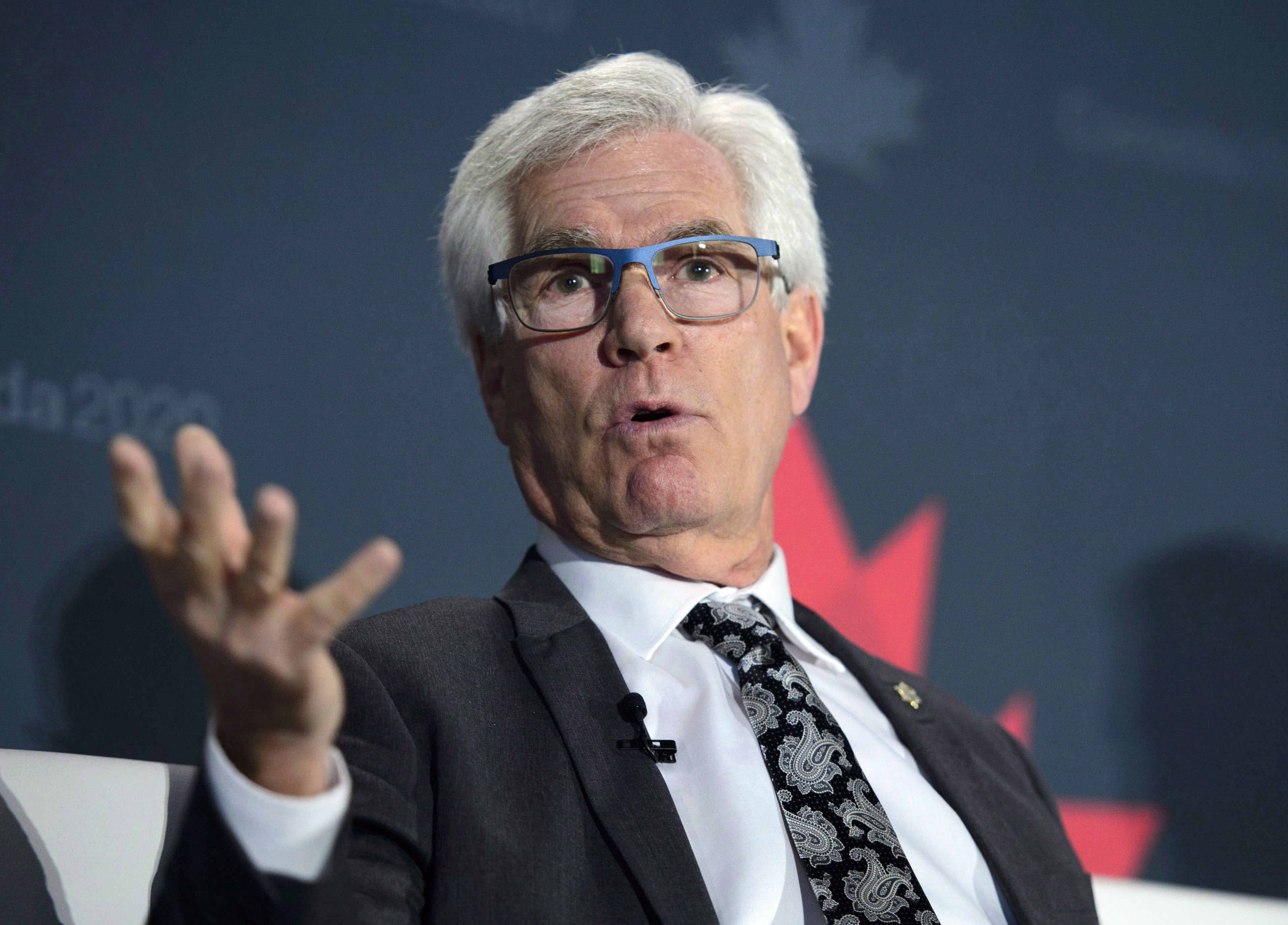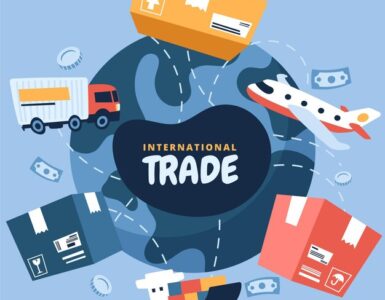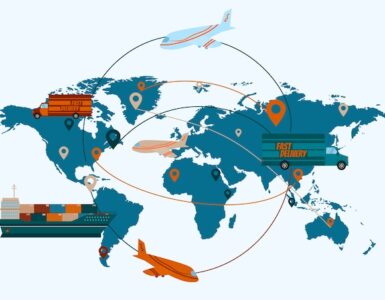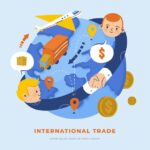The geographic diversification of international trade and investment has become a public policy goal of many countries, including Canada.
Increasingly, policy-makers are raising concerns regarding the risks, largely political, that arise when there’s too much concentration of trade and investment on a small number of trading partners.
Trade in services, however, may offer better opportunities for trade diversification. But facilitating trade in services requires supportive regulation and strong global cities like Toronto and London to serve as hubs.
In recent years Canada has expressed interest in reducing its dependence on the United States, particularly after last year’s difficult NAFTA renegotiations.

Reflecting that priority, Canada now has a minister of international trade diversification, Jim Carr. Canada has also pursued trade agreements with more distant partners via the Comprehensive Economic and Trade Agreement (CETA)between Canada and the European Union (EU) and the Comprehensive and Progressive Agreement for Trans-Pacific Partnership (CPTPP) with 10 other countries in the Asia-Pacific region.
In fact, the various countries that have ratified the CPTPP have stated as one objective the ambition to develop diverse and more distant trade and investment partners in the face of the rise of China due to the possibility of becoming overly dependent on the Chinese market.
The implicit assumption is that distance is less important to trade now because technology has lowered transportation and communications costs, and trade deals can overcome the remaining costs of distance.
Contents
Proximity versus distance
But is this entirely true? Can nations move away from their traditional trading partnerships — typically based on geographic proximity — in favour of new nations located further afield? Our research grappled with these considerations of proximity and distance in matters of trade, particularly as they pertain to Canada and the United Kingdom.
Our Canada-U.K. collaboration — comprising researchers from the London School of Economics, Western University’s Ivey Business School and Simon Fraser University’s Beedie School of Business — surveyed recent academic and practitioner data and publications on trade and what are known as foreign direct investment (FDI) flows in order to assess the role of distance.
We conclude that if you are trading in goods, physical distance still matters. The evidence also suggests that trade agreements between distant countries may not be able to overcome the costs of distance.
But that’s not true for all forms of distant trade. Our research findings show a very different result for trade in services. Services trade include direct activities like professional business services, education and tourism, but also includes indirect services such as research and design that are embedded in final products or are traded within companies.
Indirect trade in services has increased over time, as global value chains have become more geographically dispersed.

Global value chains allow the stages of production to be distributed around the world. One example is the global dispersion of research activities by multinational firms. A case in point: When Google creates a tech hub in Toronto, it effectively exports that knowledge to other Google subsidiaries around the world.
Distance matters less for the global movement of these services, particularly when they are knowledge-intensive and digital. It’s therefore not surprising that evidence suggests trade in services, direct and indirect, is growing faster than trade in goods.
But even though trade in services is seems less affected by geographic distance, there’s evidence that other measures of distance have an impact.
Cultural differences are a type of distance
International business scholars have identified a series of more general distance measures, including cultural and regulatory distance, between countries. These are sometimes referred to as CAGE distance, meaning cultural, administrative and economic differences between trading nations in addition to geographic distance.
Commonalities in several of these areas have facilitated trade and investment flows of various types among Commonwealth countries, despite the vast geographic distances that separate them.
However, in general, because trade in services involves the movement of people along with knowledge and capital, these social, political and economic dimensions take on a heightened role and can inhibit trade in services.
Trade agreements now seek to minimize these costs by including specific clauses with respect to trade in services. For example, the CPTPP includes clauses regarding financial services and investment protection. Yet more comprehensive service sector liberalization, such as public sector procurement or recognition of certifications, are difficult to negotiate because they require a higher degree of regulatory alignment, which can be politically controversial.
And so the evidence suggests that the impact of distance on trade depends on the nature of what is being traded (goods or services), and how one measures distance.
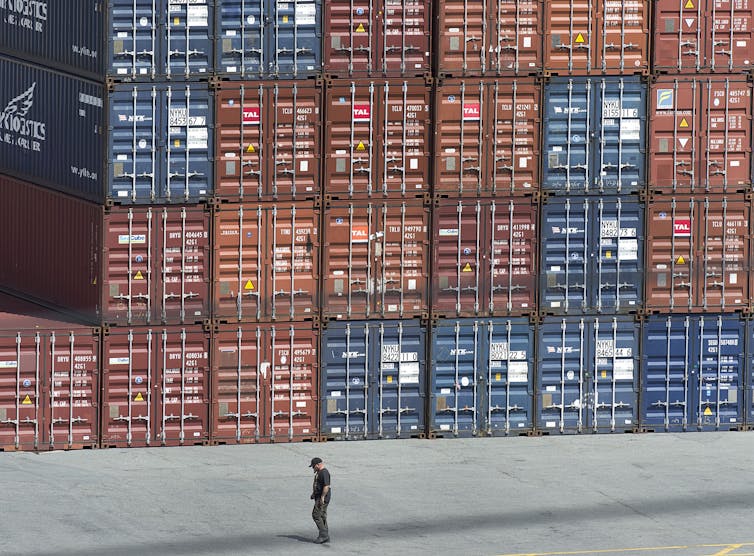
We then asked whether it matters where distance is measured from. This seems an obvious question, since when we talk about trade, we mostly think of countries. However, we found that the majority of trade in services, particularly knowledge-intensive services, in fact originates in, and is traded with, a relatively small number of international metropolitan regions, sometimes referred to as global cities.
Most trade in services, it turns out, happens between cities rather than between countries.
While there is no one particular definition of a global city, it’s clear that in order to understand the nature of trade in services and the policies that might encourage them, one must understand what global cities do and how they do it.
Cultural differences & global cities
It turns out that global cities essentially limit the impact of the aforementioned CAGE distance. Cities provide sophisticated communication, education and transportation infrastructures, and the cosmopolitan values that attract and retain talent.
That’s why it’s generally easier to move people and services between global hubs like London, Toronto, New York and Hong Kong. However, the decentralized nature of global value chains means that it’s not only the world’s largest cities that are global. Smaller cities can establish specific niches as global centres for research and design, such as Cambridge in the U.K. for biotechnology.
Global cities not only attract knowledge-intensive service firms, they have the capacity to spawn the kinds of companies that will become global exporters of services.
The important lesson to be drawn from cities is that they illustrate the links between innovative activity and international integration while at the same time blurring the distinctions between innovation and trade policy. Policies that promote innovation, in other words, are not entirely separate from those that promote diversified trade.
At the same time, cities themselves undertake trade and promotion activities that, in principle, complement those of the national government. In talking to city-based investment and trade promotion agencies, we learned that cities have developed sophisticated strategies to identify and promote trade and investment opportunities, typically with other cities around the globe.
However, these activities are not always co-ordinated with national diversification strategies. Canada has created Invest in Canada, in part to fill this role, but its mandate is focused primarily on investment attraction.
Cities have not been central to public policy discussions on trade growth and diversification, which have centred in large measure on trade agreements between countries. We suggest that while trade agreements between countries are important, the role of cities in driving trade in services should be fully explored.
[“source=theconversation”]

